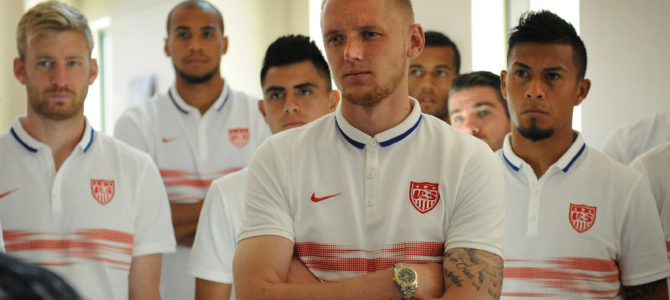2017 opened with such promise for the U.S. men’s national soccer team. After a rollercoaster 2016, one that included an admirable Copa America tournament and a disastrous World Cup qualifying start, the team looked settled again.
National team and World Cup qualifying veteran Bruce Arena replaced Jurgen Klinsmann and brought a winning mentality back to a despondent side. The United States won the Gold Cup. Most importantly, the team clawed back up the table in the CONCACAF Hexagonal thanks largely to a 6-0 drubbing of Honduras in March and a 1-1 draw in Mexico in June. A once-questionable trip to Russia in 2018 seemed certain.
September’s performances burst that bubble. The United States only earned one point in their two matches, with a 2-0 loss at home to Costa Rica and a 1-1 draw away in Honduras. They looked second-best for too much of the match against Costa Rica. The Americans fell behind to Honduras in the first half and were outside the qualifying places until Bobby Wood scrambled in a goal in the 85th minute to salvage a point.
This cycle has revealed a startling dearth of talent, with the United States relying too heavily on players over 30 and 19-year-old Christian Pulisic. A full-strength side could cause trouble for most World Cup teams. But they don’t have the depth, especially in defense. Few teams enter a World Cup at full strength. Injuries, fitness, and cards force managers to adjust. And recent performances have prompted questions about whether the players, not Klinsmann, were and are the problem.
It feels like a wasted four years for the Yanks. Much of this four-year cycle can be defined by angst. America has arguably regressed and will end 2018 World Cup qualifying with three losses and a draw against regional rivals Mexico and Costa Rica. If the United States makes it to Russia in 2018, this Hexagonal will serve as a warning for future World Cup qualifying campaigns. The region’s format offers plenty of room for error. However, as Mexico and the United States have shown recently, CONCACAF’s top dogs can no longer stroll through qualifying.
Major League Soccer’s expansion plays some role in this, by giving more North and Central American players a chance at top-flight soccer. The United States should benefit in the long-term, since better competition will in theory push them further. But they’re struggling now.
All’s not lost, however, as the United States prepares to play Panama at home (10/6) and Trinidad and Tobago away (10/10). They still control their own destiny. The teams immediately above (Panama) and below (Honduras) them still have Mexico and Costa Rica on the schedule. The United States enters the final round of qualifying in fourth place out of six, good enough for a World Cup playoff against either Syria or Australia in November. Neither opponent would be easy, but they could do worse for a World Cup playoff.
Looking to Russia in 2018 with extreme optimism, the ease of qualifying doesn’t indicate World Cup success. The United States struggled in 2002 qualifying and ended up in the quarterfinals at the World Cup. They breezed through 2006 qualifying and went out in the group stage.
Plenty can happen in the eight months until the World Cup kicks off in Russia: Unknown talent emerging, the right player hitting a hot streak, and a favorable group can give hope to even the worst national teams. A deep run will make everyone forget any qualifying struggles. But first they have to get there.









